Post Syndicated from maceneff original https://aws.amazon.com/blogs/compute/validating-attestation-documents-produced-by-aws-nitro-enclaves/
This blog post is written by Paco Gonzalez Senior EMEA IoT Specialist SA.
AWS Nitro Enclaves offers an isolated, hardened, and highly constrained environment to host security-critical applications. Think of AWS Nitro Enclaves as regular Amazon Elastic Compute Cloud (Amazon EC2) virtual machines (VMs) but with the added benefit of the environment being highly constrained.
A great benefit of using AWS Nitro Enclaves is that you can run your software as if it was a regular EC2 instance, but with no persistent storage and limited access to external systems. The only way to communicate with AWS Nitro Enclaves is using a VSOCK socket. This special type of communication mechanism acts as an isolated communication channel between the parent EC2 instance and AWS Nitro Enclaves.
Fig 1 – AWS Nitro Enclaves uses the proven isolation of the Nitro Hypervisor to further isolate the CPU and memory of the Nitro Enclaves from users, applications, and libraries on the parent instance.
AWS Nitro Enclaves comes with a custom Linux device called the Nitro Security Module (NSM), which is accessible via /dev/nsm. This device provides attestation capability to the Nitro Enclaves. The attestation comes in the form of an attestation document. The attestation document makes it easy and safe to build trust between systems that interact with the Nitro Enclaves. The external system must have a mechanism to process the attestation document to determine the validity of the attestation document.
In this post, I go through the anatomy of an attestation document produced by the NSM API. I then show you an example of how to perform different validations that help determine the accuracy of an attestation document produced by the AWS Nitro Enclaves Security Module. I use syntactic and semantic validations to check for the attestation document’s correctness before proceeding with a cryptographic validation of the contents of the document’s payload. The examples used in this post use the C language. Look at the companion repository available in GitHub for access to the all source code used in this post.
Anatomy of an attestation document produced by AWS Nitro Enclaves
The attestation document uses the Concise Binary Object Representation (CBOR) format to encode the data. The CBOR object is wrapped using the CBOR Object Signing and Encryption (COSE) protocol. The COSE format used is a single-signer data structure called “COSE_Sign1”. The object is comprised of headers, the payload, and a signature.
For more information about COSE, see RFC 8152: CBOR Object Signing and Encryption (COSE). For more information about CBOR, see RFC 8949 Concise Binary Object Representation (CBOR).
We published a library to make it easy to interact with the NSM. The library contains helpers which your application, running on the Nitro Enclaves, can use to communicate with the NSM device.
Here is the minimum code needed to generate an attestation document:
#include <stdlib.h>
#include <stdio.h>
#include <nsm.h>
#define NSM_MAX_ATTESTATION_DOC_SIZE (16 * 1024)
int main(void) {
/// NSM library initialization function.
/// *Returns*: A descriptor for the opened device file.
int nsm_fd = nsm_lib_init();
if (nsm_fd < 0) {
exit(1);
}
/// NSM `GetAttestationDoc` operation for non-Rust callers.
/// *Argument 1 (input)*: The descriptor to the NSM device file.
/// *Argument 2 (input)*: User data.
/// *Argument 3 (input)*: The size of the user data buffer.
/// *Argument 4 (input)*: Nonce data.
/// *Argument 5 (input)*: The size of the nonce data buffer.
/// *Argument 6 (input)*: Public key data.
/// *Argument 7 (input)*: The size of the public key data buffer.
/// *Argument 8 (output)*: The obtained attestation document.
/// *Argument 9 (input / output)*: The document buffer capacity (as input)
/// and the size of the received document (as output).
/// *Returns*: The status of the operation.
int status;
uint8_t att_doc_buff[NSM_MAX_ATTESTATION_DOC_SIZE];
uint32_t att_doc_cap_and_size = NSM_MAX_ATTESTATION_DOC_SIZE;
status = nsm_get_attestation_doc(nsm_fd, NULL, 0, NULL, 0, NULL, 0, att_doc_buff,
&att_doc_cap_and_size);
if (status != ERROR_CODE_SUCCESS) {
printf("[Error] Request::Attestation got invalid response: %s\n",status);
exit(1);
}
printf("########## attestation_document_buff ##########\r\n");
for(int i=0; i<att_doc_cap_and_size; i++)
fprintf(stdout, "%02X", att_doc_buff[i]);
exit(0);
}
To produce a sample attestation document, initialize the device, call the function ‘nsm_get_attestation_doc’ inside the AWS Nitro Enclaves, and dump the contents. The library is written using Rust, but it contains
bindings for C. You can read more about the library and some of the other relevant capabilities
here.
The COSE headers contain a protected and an un-protected data section. The cryptographic algorithm used for the signature is specified inside the protected area. AWS Nitro Enclaves use a 384-bit elliptic curve algorithm (P-384) to sign attestation documents. AWS Nitro Enclaves do not use the unprotected data field so it is always left blank.
The payload contains fixed parameters that include the following: information about the issuing NSM, a timestamp of the issuing event, a map of all the locked Platform Configuration Registers (PCRs) at the moment the attestation document was generated, the hashing algorithm used to produce the digest that was used to calculate the PCR values – AWS Nitro Enclaves use a 384 bit secure hashing algorithm (SHA384), a x509 certificate signed by AWS Nitro Enclaves’ Private Public Key Infrastructure (PKI). An AWS Nitro Enclaves certificate expires three hours after it has been issued. The common name (CN) contains information about the issuing NSM – and finally the issuing Certificate Authority (CA) bundle. The payload also contains optional parameters that a third-party application can use to create custom authentication and authorization workflows. The optional parameters are: a public key, a cryptographic nonce, and additional arbitrary data.
Finally, the signature is the result of a signing operation using the private key related to the public key contained inside the certificate that is part of the payload.

Fig 2. An attestation document is generated and signed by the Nitro Hypervisor. It contains information about the Nitro Enclaves and it can be used by an external service to verify the identity of Nitro Enclaves and to establish trust. You can use the attestation document to build your own cryptographic attestation mechanisms.
Syntactical validation
Early validation of the attestation document format makes sure that only documents that conform to the expected structure are processed in subsequent steps.
I start by attempting to decode the CBOR object and testing to see if it corresponds to a COSE object signed with one signer or ‘COSE_Sign1’ structure. This can be easily done by looking at the most significant first three bits (MSB) of the first byte – I am expecting a stream of CBOR bytes (decimal 6). Then, I take the least significant (LSB) remaining five bits of the first byte – I am expecting a tag that tells me it is a COSE_Sign1 object (decimal 18).
assert(att_doc_buff[0*] == 6 <<5 | 18); // 0xD2
* Note that the time of writing, the NSM does not include the COSE tag and thus this validation cannot be made and is mentioned in this post for informational purposes only. However, it is important to keep this in mind, as the tag is part of the standard, and the NSM device or library could include it in the future.*
The next step is to parse the actual CBOR object. A COSE_Sign1 object is an array of size 4 (protected headers, un protected headers, payload, and signature). Therefore, I must check that the next three MSB correspond to Type 4 (array) and that the size is exactly 4.
assert(att_doc_buff[0] == 4 <<5 | 4); // 0x84
The next byte determines what the first CBOR item of the array looks like. I am expecting the protected COSE header as the first item of the array. The CBOR field should indicate that the contents of the item are of a Type 2 (raw bytes) and the size should be exactly 4.
assert(att_doc_buff[1] == 2 <<5 | 4); // 0x44
The next four bytes represent the protected header. The contents of this item is a regular CBOR object. The object should contain a Type 5 (map) with a single item (1). The item first key is expected to be the number 1. The first three MSB of the first byte should be a Type 1 (negative integer). The remaining five LSB should indicate that the value is an 8-bit number (decimal 24). The last byte should be negative 35 as it maps to the P-384 curve that Nitro Enclaves use. Note that CBOR negative numbers are stored minus 1.
assert(att_doc_buff[2] == 5 <<5 | 1); // 0xA1
assert(att_doc_buff[3] == 0x01); // 0x01
assert(att_doc_buff[4] == 1 <<5 | 24); // 0x38
assert(att_doc_buff[4] == 35-1); // 0x22
The next byte corresponds to the unprotected header. AWS Nitro Enclaves do not use unprotected headers. Therefore, the expected is a Type 5 (map) with zero items.
assert(att_doc_buff[6] == 5 <<5 | 0); // 0xA0
Now that I am done inspecting the headers, I can move onto the payload. The CBOR object used for the payload is Type 2 (raw bytes). This time we are expecting a large steam of bytes. The remaining five LSB are used to indicate the data type used to indicate the size of the byte stream (i.e. 8-bit, 16-bit). AWS Nitro Enclaves attestation documents are about 5 KiB without using any of the three optional parameters. The optional parameters have a size limit of 1 KiB each. This means that it would be highly unlikely for the buffer to be larger than a 16-bit number (CBOR short count: 25).
assert(att_doc_buff[8] == 2 <<5 | 25); // 0x59
The next two bytes represent the size of the payload which I am going to skip those for now, as the contents of the payload are validated in subsequent steps. I’ll move onto the final portion of the attestation document: the signature. The signature has to be a Type 2 (raw bytes) of exactly 96 bytes.
uint16_t payload_size = att_doc_buff[8] << 8 | att_doc_buff[9];
assert(att_doc_buff[9+payload_size+1] == (2<<5 | 24)); // 0x58
assert(att_doc_buff[9+payload_size+1+1] == 96); // 0x60
At this point, I have validated that the data produced by the NSM looks the way it should. My application is ready to start looking into the contents of the attestation document.
I want to make sure that the document contains all mandatory fields and I can check that the fields have the right structure and their sizes are within the expected boundaries. I have evidence that the data looks the way it should, so I am ready to use an off-the-shelf CBOR library to make the validation process easier instead of doing it by hand.
Here is an example of how to load a CBOR object using libcbor and standard C libraries to check the contents. I am showing just one example to illustrate the process. Refer to the section ‘Verifying the root of trust’ in the AWS Nitro Enclaves User Guide for a detailed description of each parameter and the validations that your application should perform to make sure that the document is valid.
#include <stdlib.h>
#include <stdio.h>
#include <string.h>
#include <assert.h>
#include <cbor.h>
#include <openssl/ssl.h>
#define APP_X509_BUFF_LEN (1024*2)
#define APP_ATTDOC_BUFF_LEN (1024*10)
void output_handler(char * msg){
fprintf(stdout, "\r\n%s\r\n", msg);
}
void output_handler_bytes(uint8_t * buffer, int buffer_size){
for(int i=0; i<buffer_size; i++)
fprintf(stdout, "%02X", buffer[i]);
fprintf(stdout, "\r\n");
}
int read_file( unsigned char * file, char * file_name, size_t elements) {
FILE * fp; size_t file_len = 0;
fp = fopen(file_name, "r");
file_len = fread(file, sizeof(char), elements, fp);
if (ferror(fp) != 0 ) {
fputs("Error reading file", stderr);
}
fclose(fp);
return file_len;
}
int main(int argc, char* argv[]) {
// STEP 0 - LOAD ATTESTATION DOCUMENT
// Check inputs, expect two
if (argc != 3) {
fprintf(stderr, "%s\r\n", "ERROR: usage: ./main {att_doc_sample.bin} {AWS_NitroEnclaves_Root-G1.pem}"); exit(1);
}
// Load file into buffer, use 1st argument
unsigned char * att_doc_buff = malloc(APP_ATTDOC_BUFF_LEN);
int att_doc_len = read_file(att_doc_buff, argv[1], APP_ATTDOC_BUFF_LEN );
// STEP 1 - SYTANCTIC VALIDATON
// Check COSE TAG (skipping - not currently implemented by AWS Nitro Enclaves)
// assert(att_doc_buff[0] == 6 <<5 | 18); // 0xD2
// Check if this is an array of exactly 4 items
assert(att_doc_buff[0] == (4<<5 | 4)); // 0x84
// Check if next item is a byte stream of 4 bytes
assert(att_doc_buff[1] == (2<<5 | 4)); // 0x44
// Check is fist item if byte stream is a map with 1 item
assert(att_doc_buff[2] == (5<<5 | 1)); // 0xA1
// Check that the first key of the map is 0x01
assert(att_doc_buff[3] == 0x01); // 0x01
// Check that value of the the first key of the map is -35 (P-384 curve)
assert(att_doc_buff[4] == (1 <<5 | 24)); // 0x38
assert(att_doc_buff[5] == 35-1); // 0x22
// Check that next item is a map of 0 items
assert(att_doc_buff[6] == (5<<5 | 0)); // 0xA0
// Check that the next item is a byte stream and the size is a 16-bit number (dec. 25)
assert(att_doc_buff[7] == (2<<5 | 25)); // 0x59
// Cast the 16-bit number
uint16_t payload_size = att_doc_buff[8] << 8 | att_doc_buff[9];
// Check that the item after the payload is a byte stream and the size is 8-bit number (dec. 24)
assert(att_doc_buff[9+payload_size+1] == (2<<5 | 24)); // 0x58
// Check that the size of the signature is exactly 96 bytes
assert(att_doc_buff[9+payload_size+1+1] == 96); // 0x60
// Parse buffer using library
struct cbor_load_result ad_result;
cbor_item_t * ad_item = cbor_load(att_doc_buff, att_doc_len, &ad_result);
free(att_doc_buff); // not needed anymore
// Parse protected header -> item 0
cbor_item_t * ad_pheader = cbor_array_get(ad_item, 0);
size_t ad_pheader_len = cbor_bytestring_length(ad_pheader);
// Parse signed bytes -> item 2 (skip un-protected headers as they are always empty)
cbor_item_t * ad_signed = cbor_array_get(ad_item, 2);
size_t ad_signed_len = cbor_bytestring_length(ad_signed);
// Load signed bytes as a new CBOR object
unsigned char * ad_signed_d = cbor_bytestring_handle(ad_signed);
struct cbor_load_result ad_signed_result;
cbor_item_t * ad_signed_item = cbor_load(ad_signed_d, ad_signed_len, &ad_signed_result);
// Create the pair structure
struct cbor_pair * ad_signed_item_pairs = cbor_map_handle(ad_signed_item);
// Parse signature -> item 3
cbor_item_t * ad_sig = cbor_array_get(ad_item, 3);
size_t ad_sig_len = cbor_bytestring_length(ad_sig);
unsigned char * ad_sig_d = cbor_bytestring_handle(ad_sig);
// Example 01: Check that the first item's key is the string "module_id" and that is not empty
size_t module_k_len = cbor_string_length(ad_signed_item_pairs[0].key);
unsigned char * module_k_str = realloc(cbor_string_handle(ad_signed_item_pairs[0].key), module_k_len+1); //null char
module_k_str[module_k_len] = '\0';
size_t module_v_len = cbor_string_length(ad_signed_item_pairs[0].value);
unsigned char * module_v_str = realloc(cbor_string_handle(ad_signed_item_pairs[0].value), module_v_len+1); //null char
module_v_str[module_v_len] = '\0';
assert(module_k_len != 0);
assert(module_v_len != 0);
// Example 02: Check that the module id key is actually the string "module_id"
assert(!strcmp("module_id",(const char *)module_k_str));
// Example 03: Check that the signature is exactly 96 bytes long
assert(ad_sig_len == 96);
// Example 04: Check that the protected header is exactly 4 bytes long
assert(ad_pheader_len == 4);
Semantic validation
The next step is to look at the data contained in the attestation document and check if it conforms to pre-defined business rules. The attestation document contains a certificate that was signed by the AWS Nitro Enclaves’ PKI. This validation it is important, as it proves that the document was signed by the AWS Nitro Enclaves’ PKI.
The signature of an x509 certificate is based on the certificate’s payload digest. Validating this signature means that I trust the information contained within the certificate, including the public key which I can later use to validate the attestation document itself. Furthermore, the information in the document contains details about the NSM module and a timestamp. Passing this check provides the assurances I need to trust that the document originated from my software running on AWS Nitro Enclaves at a specific time.

Fig 3. The attestation document contains a x.509 certificate that was signed by the AWS Nitro Enclaves’ PKI.
Here is an example of how I use the AWS Nitro Enclaves’ Private PKI root certificate from an external file. Then, use the CA bundle contained in the attestation document to validate the authenticity of the certificate contained in the document. In this example, I am using the OpenSSL library.
// STEP 2 - SEMANTIC VALIDATION
// Load AWS Nitro Enclave's Private PKI root certificate
unsigned char * x509_root_ca = malloc(APP_X509_BUFF_LEN);
int x509_root_ca_len = read_file(x509_root_ca, argv[2], APP_X509_BUFF_LEN );
BIO * bio = BIO_new_mem_buf((void*)x509_root_ca, x509_root_ca_len);
X509 * caX509 = PEM_read_bio_X509(bio, NULL, NULL, NULL);
if (caX509 == NULL) {
fprintf(stderr, "%s\r\n", "ERROR: PEM_read_bio_X509 failed"); exit(1);
}
free(x509_root_ca); free(bio);
// Create CA_STORE
X509_STORE * ca_store = NULL;
ca_store = X509_STORE_new();
/* ADD X509_V_FLAG_NO_CHECK_TIME FOR TESTING! TODO REMOVE */
X509_STORE_set_flags (ca_store, X509_V_FLAG_NO_CHECK_TIME);
if (X509_STORE_add_cert(ca_store, caX509) != 1) {
fprintf(stderr, "%s\r\n", "ERROR: X509_STORE_add_cert failed"); exit(1);
}
// Add certificates to CA_STORE from cabundle
// Skip the first one [0] as that is the Root CA and we want to read it from an external source
for (int i = 1; i < cbor_array_size(ad_signed_item_pairs[5].value); ++i){
cbor_item_t * ad_cabundle = cbor_array_get(ad_signed_item_pairs[5].value, i);
size_t ad_cabundle_len = cbor_bytestring_length(ad_cabundle);
unsigned char * ad_cabundle_d = cbor_bytestring_handle(ad_cabundle);
X509 * cabnX509 = X509_new();
cabnX509 = d2i_X509(&cabnX509, (const unsigned char **)&ad_cabundle_d, ad_cabundle_len);
if (cabnX509 == NULL) {
fprintf(stderr, "%s\r\n", "ERROR: d2i_X509 failed"); exit(1);
}
if (X509_STORE_add_cert(ca_store, cabnX509) != 1) {
fprintf(stderr, "%s\r\n", "ERROR: X509_STORE_add_cert failed"); exit(1);
}
}
// Load certificate from attestation dcoument - this a certificate that we don't trust (yet)
size_t ad_signed_cert_len = cbor_bytestring_length(ad_signed_item_pairs[4].value);
unsigned char * ad_signed_cert_d = realloc(cbor_bytestring_handle(ad_signed_item_pairs[4].value), ad_signed_cert_len);
X509 * pX509 = X509_new();
pX509 = d2i_X509(&pX509, (const unsigned char **)&ad_signed_cert_d, ad_signed_cert_len);
if (pX509 == NULL) {
fprintf(stderr, "%s\r\n", "ERROR: d2i_X509 failed"); exit(1);
}
// Initialize X509 store context and veryfy untrusted certificate
STACK_OF(X509) * ca_stack = NULL;
X509_STORE_CTX * store_ctx = X509_STORE_CTX_new();
if (X509_STORE_CTX_init(store_ctx, ca_store, pX509, ca_stack) != 1) {
fprintf(stderr, "%s\r\n", "ERROR: X509_STORE_CTX_init failed"); exit(1);
}
if (X509_verify_cert(store_ctx) != 1) {
fprintf(stderr, "%s\r\n", "ERROR: X509_verify_cert failed"); exit(1);
}
fprintf(stdout, "%s\r\n", "OK: ########## Root of Trust Verified! ##########");
Having proof that the certificate was signed by the expected CA is just the beginning. I also want to make sure that the contents of the certificate are correct. This involves checking that the certificate has not expired, as well as making sure that the critical extensions contain correct information to name a few.
Cryptographic validation
The syntactic validation helped me determine that the attestation document has the right shape, and the sematic validation helped me determine if the document meets my business rules. However, I still don’t know for sure if the document is valid.
The attestation document contains critical information, such as PCRs and the AWS Identity Access and Management (IAM) role among other details. I can safely use these two values in my authentication or authorization workflows if I can prove that they are trustworthy.
The attestation document was signed using a private key that is never exposed. However, the corresponding public key is contained within the certificate that was issued and stored within the attestation document. I know I can trust the contents of this certificate because I have proof that the certificate was signed by an entity that I trust.
Here is an example where I cryptographically prove that all the protected contents of the attestation document are related to the public key contained in the certificate. To validate the COSE signature, I must first recreate the original message that was used during the signature operation – COSE uses a specific format. Then, I use OpenSSL to check if there is a match between the message, signature, and public key. If the signature checks, then I can trust the contents of the already semantically-verified payload.
// STEP 3 - CRYPTOGRAPHIC VALIDATION
#define SIG_STRUCTURE_BUFFER_S (1024*10)
// Create new empty key
EVP_PKEY * pkey = EVP_PKEY_new();
// Create a new eliptic curve object using P-384 curve
EC_KEY * ec_key = EC_KEY_new_by_curve_name(NID_secp384r1);
// Reference the public key stucture and eliptic curve object with each other
EVP_PKEY_assign_EC_KEY(pkey, ec_key);
// Load the public key from the attestation document (we trust it now)
pkey = X509_get_pubkey(pX509);
if (pkey == NULL) {
fprintf(stderr, "%s\r\n", "ERROR: X509_get_pubkey failed"); exit(1);
}
// Allocate, initialize and return a digest context
EVP_MD_CTX * ctx = EVP_MD_CTX_create();
// Set up verification context
if (EVP_DigestVerifyInit(ctx, NULL, EVP_sha384(), NULL, pkey) <= 0) {
fprintf(stderr, "%s\r\n", "ERROR: EVP_DigestVerifyInit failed"); exit(1);
}
// Recreate COSE_Sign1 structure, and serilise it into a buffer
cbor_item_t * cose_sig_arr = cbor_new_definite_array(4);
cbor_item_t * cose_sig_arr_0_sig1 = cbor_build_string("Signature1");
cbor_item_t * cose_sig_arr_2_empty = cbor_build_bytestring(NULL, 0);
assert(cbor_array_push(cose_sig_arr, cose_sig_arr_0_sig1));
assert(cbor_array_push(cose_sig_arr, ad_pheader));
assert(cbor_array_push(cose_sig_arr, cose_sig_arr_2_empty));
assert(cbor_array_push(cose_sig_arr, ad_signed));
unsigned char sig_struct_buffer[SIG_STRUCTURE_BUFFER_S];
size_t sig_struct_buffer_len = cbor_serialize(cose_sig_arr, sig_struct_buffer, SIG_STRUCTURE_BUFFER_S);
// Hash message and load it into the verificaiton context
if (EVP_DigestVerifyUpdate(ctx, sig_struct_buffer, sig_struct_buffer_len) <= 0) {
fprintf(stderr, "%s\r\n", "ERROR: nEVP_DigestVerifyUpdate failed"); exit(1);
}
// Create R and V BIGNUM structures
BIGNUM * sig_r = BN_new(); BIGNUM * sig_v = BN_new();
BN_bin2bn(ad_sig_d, 48, sig_r); BN_bin2bn(ad_sig_d + 48, 48, sig_v);
// Allocate an empty ECDSA_SIG structure
ECDSA_SIG * ec_sig = ECDSA_SIG_new();
// Set R and V values
ECDSA_SIG_set0(ec_sig, sig_r, sig_v);
// Convert R and V values into DER format
int sig_size = i2d_ECDSA_SIG(ec_sig, NULL);
unsigned char * sig_bytes = malloc(sig_size); unsigned char * p;
memset_s(sig_bytes,sig_size,0xFF, sig_size);
p = sig_bytes;
sig_size = i2d_ECDSA_SIG(ec_sig, &p);
// Verify the data in the context against the signature and get final result
if (EVP_DigestVerifyFinal(ctx, sig_bytes, sig_size) != 1) {
fprintf(stderr, "%s\r\n", "ERROR: EVP_DigestVerifyFinal failed"); exit(1);
} else {
fprintf(stdout, "%s\r\n", "OK: ########## Message Verified! ##########");
free(sig_bytes);
exit(0);
}
//#endif
exit(1);
}
Conclusion
In this post, I went through a detailed examination of attestation documents produced by the AWS Nitro Enclaves. Then, I went over different types of validations (syntactic, semantic, and cryptographic) that safely help determine if an attestation document should be trusted. I’ve also included access to a public repository that contains the source code used in this post. New AWS Nitro Enclaves users can use it as a starting point when looking to integrate their applications with AWS Nitro Enclaves and build highly secure and confidential solutions.























 Nitin Arora is a Sr. Software Development Manager for Finance Automation in Amazon. He has over 18 years of experience building business critical, scalable, high-performance software. Nitin leads several data and analytics initiatives within Finance, which includes building Data Mesh. In his spare time, he enjoys listening to music and read.
Nitin Arora is a Sr. Software Development Manager for Finance Automation in Amazon. He has over 18 years of experience building business critical, scalable, high-performance software. Nitin leads several data and analytics initiatives within Finance, which includes building Data Mesh. In his spare time, he enjoys listening to music and read. Pradeep Misra is a Specialist Solutions Architect at AWS. He works across Amazon to architect and design modern distributed analytics and AI/ML platform solutions. He is passionate about solving customer challenges using data, analytics, and AI/ML. Outside of work, Pradeep likes exploring new places, trying new cuisines, and playing board games with his family. He also likes doing science experiments with his daughters.
Pradeep Misra is a Specialist Solutions Architect at AWS. He works across Amazon to architect and design modern distributed analytics and AI/ML platform solutions. He is passionate about solving customer challenges using data, analytics, and AI/ML. Outside of work, Pradeep likes exploring new places, trying new cuisines, and playing board games with his family. He also likes doing science experiments with his daughters. Rajesh Rao is a Sr. Technical Program Manager in Amazon Finance. He works with Data Services teams within Amazon to build and deliver data processing and data analytics solutions for Financial Operations teams. He is passionate about delivering innovative and optimal solutions using AWS to enable data-driven business outcomes for his customers.
Rajesh Rao is a Sr. Technical Program Manager in Amazon Finance. He works with Data Services teams within Amazon to build and deliver data processing and data analytics solutions for Financial Operations teams. He is passionate about delivering innovative and optimal solutions using AWS to enable data-driven business outcomes for his customers. Andrew Long, the lead developer for data mesh, has designed and built many of the big data processing systems that have fueled Amazon’s financial data processing infrastructure. His work encompasses a range of areas, including S3-based table formats for Spark, diverse Spark performance optimizations, distributed orchestration engines and the development of data cataloging systems. Additionally, Andrew finds pleasure in sharing his knowledge of partner acrobatics.
Andrew Long, the lead developer for data mesh, has designed and built many of the big data processing systems that have fueled Amazon’s financial data processing infrastructure. His work encompasses a range of areas, including S3-based table formats for Spark, diverse Spark performance optimizations, distributed orchestration engines and the development of data cataloging systems. Additionally, Andrew finds pleasure in sharing his knowledge of partner acrobatics. Kumar Satyen Gaurav, is an experienced Software Development Manager at Amazon, with over 16 years of expertise in big data analytics and software development. He leads a team of engineers to build products and services using AWS big data technologies, for providing key business insights for Amazon Finance Operations across diverse business verticals. Beyond work, he finds joy in reading, traveling and learning strategic challenges of chess.
Kumar Satyen Gaurav, is an experienced Software Development Manager at Amazon, with over 16 years of expertise in big data analytics and software development. He leads a team of engineers to build products and services using AWS big data technologies, for providing key business insights for Amazon Finance Operations across diverse business verticals. Beyond work, he finds joy in reading, traveling and learning strategic challenges of chess.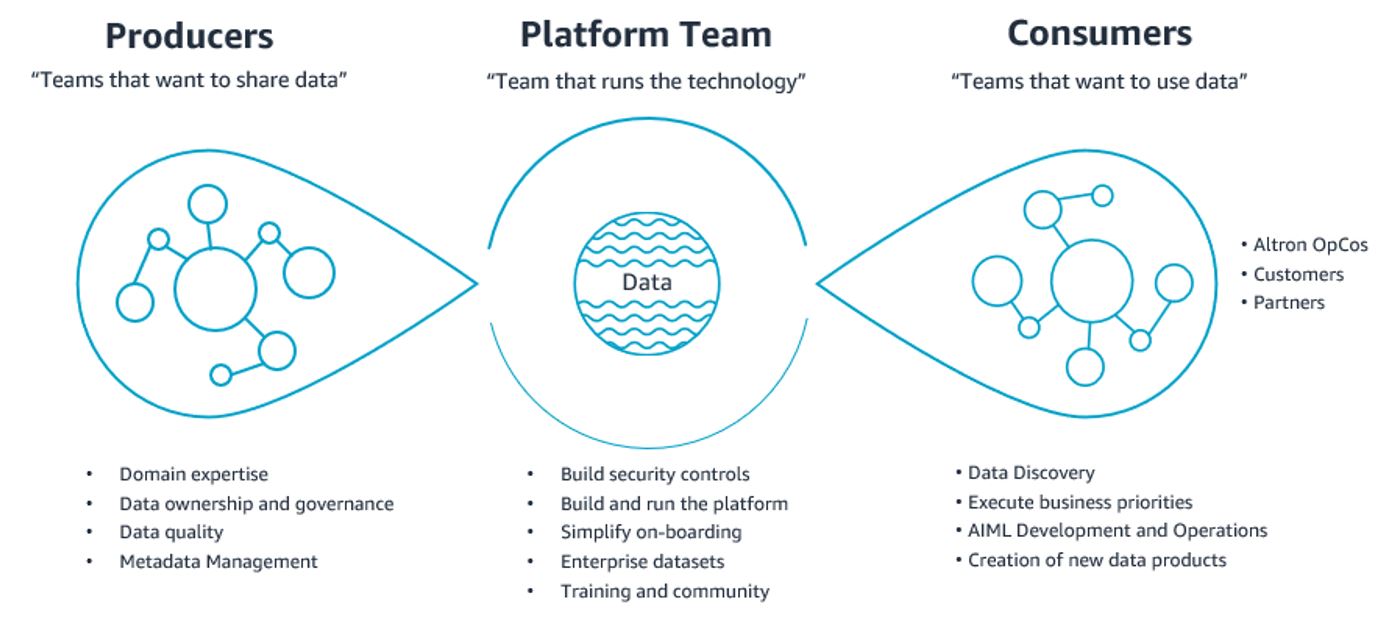


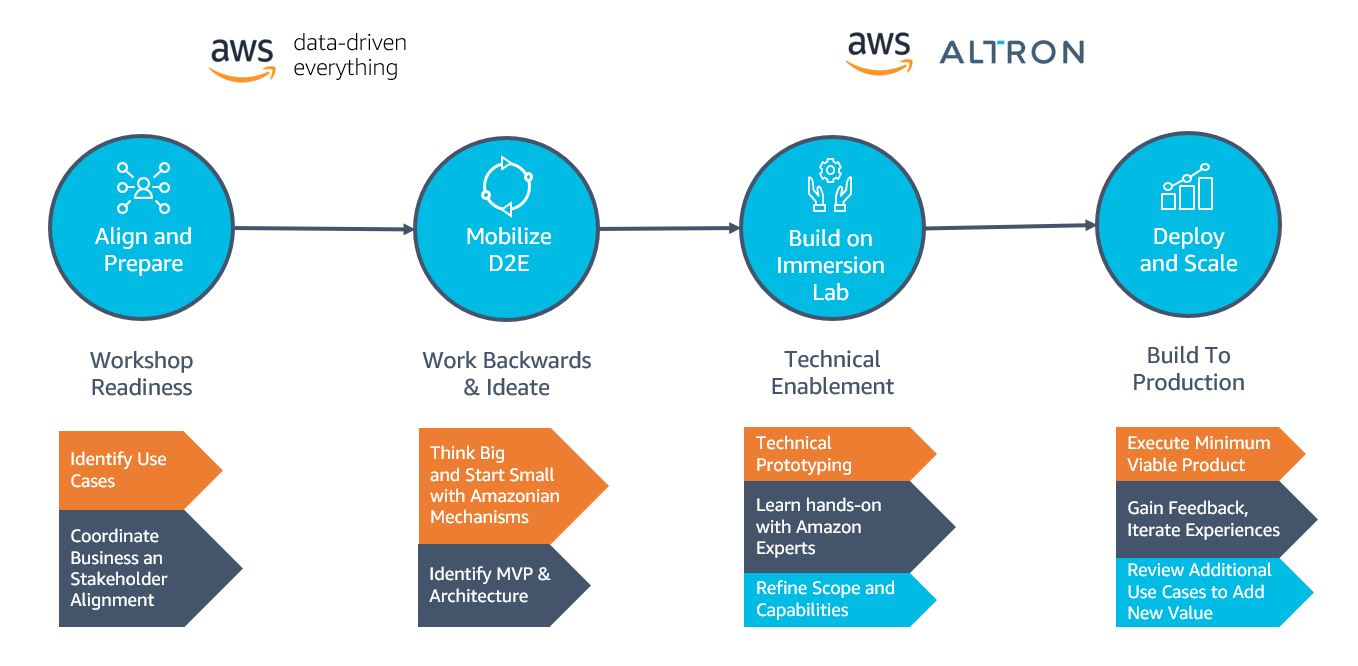
 Jacques Steyn runs the Altron Data Analytics Professional Services. He has been leading the building of data warehouses and analytic solutions for the past 20 years. In his free time, he spends time with his family, whether it be on the golf , walking in the mountains, or camping in South Africa, Botswana, and Namibia.
Jacques Steyn runs the Altron Data Analytics Professional Services. He has been leading the building of data warehouses and analytic solutions for the past 20 years. In his free time, he spends time with his family, whether it be on the golf , walking in the mountains, or camping in South Africa, Botswana, and Namibia. Jason Yung is a Principal Analytics Specialist with Amazon Web Services. Working with Senior Executives across the Europe and Asia-Pacific Regions, he helps customers become data-driven by understanding their use cases and articulating business value through Amazon mechanisms. In his free time, he spends time looking after a very active 1-year-old daughter, alongside juggling geeky activities with respectable hobbies such as cooking sub-par food.
Jason Yung is a Principal Analytics Specialist with Amazon Web Services. Working with Senior Executives across the Europe and Asia-Pacific Regions, he helps customers become data-driven by understanding their use cases and articulating business value through Amazon mechanisms. In his free time, he spends time looking after a very active 1-year-old daughter, alongside juggling geeky activities with respectable hobbies such as cooking sub-par food. Michele Lamarca is a Senior Solutions Architect with Amazon Web Services. He helps architect and run Solutions Accelerators in Europe to enable customers to become hands-on with AWS services and build prototypes quickly to release the value of data in the organization. In his free time, he reads books and tries (hopelessly) to improve his jazz piano skills.
Michele Lamarca is a Senior Solutions Architect with Amazon Web Services. He helps architect and run Solutions Accelerators in Europe to enable customers to become hands-on with AWS services and build prototypes quickly to release the value of data in the organization. In his free time, he reads books and tries (hopelessly) to improve his jazz piano skills. Hamza is a Specialist Solutions Architect with Amazon Web Services. He runs Solutions Accelerators in EMEA regions to help customers accelerate their journey to move from an idea into a solution in production. In his free time, he spends time with his family, meets with friends, swims in the municipal swimming pool, and learns new skills.
Hamza is a Specialist Solutions Architect with Amazon Web Services. He runs Solutions Accelerators in EMEA regions to help customers accelerate their journey to move from an idea into a solution in production. In his free time, he spends time with his family, meets with friends, swims in the municipal swimming pool, and learns new skills.


 Kris Bliesner, CEO, Vega Cloud is a seasoned technology leader with over 25 years of experience in IT management, cloud computing, and consumer-based technology. As the co-founder and CEO of Vega Cloud, Kris continues to be at the forefront of revolutionizing cloud infrastructure optimization.
Kris Bliesner, CEO, Vega Cloud is a seasoned technology leader with over 25 years of experience in IT management, cloud computing, and consumer-based technology. As the co-founder and CEO of Vega Cloud, Kris continues to be at the forefront of revolutionizing cloud infrastructure optimization. Mike Brown, CTO, Vega Cloud is a highly-skilled technology leader and co-founder of Vega Cloud, where he currently serves as the Chief Technology Officer (CTO). With a proven track record in driving technological innovation, Mike has been instrumental in shaping the application architecture and solutions for the company.
Mike Brown, CTO, Vega Cloud is a highly-skilled technology leader and co-founder of Vega Cloud, where he currently serves as the Chief Technology Officer (CTO). With a proven track record in driving technological innovation, Mike has been instrumental in shaping the application architecture and solutions for the company.




 Gonzalo Lezma is the Mexico Finance Manager for the Amazon LATAM Finance Team. He is a lifelong learner, tech and data lover.
Gonzalo Lezma is the Mexico Finance Manager for the Amazon LATAM Finance Team. He is a lifelong learner, tech and data lover.




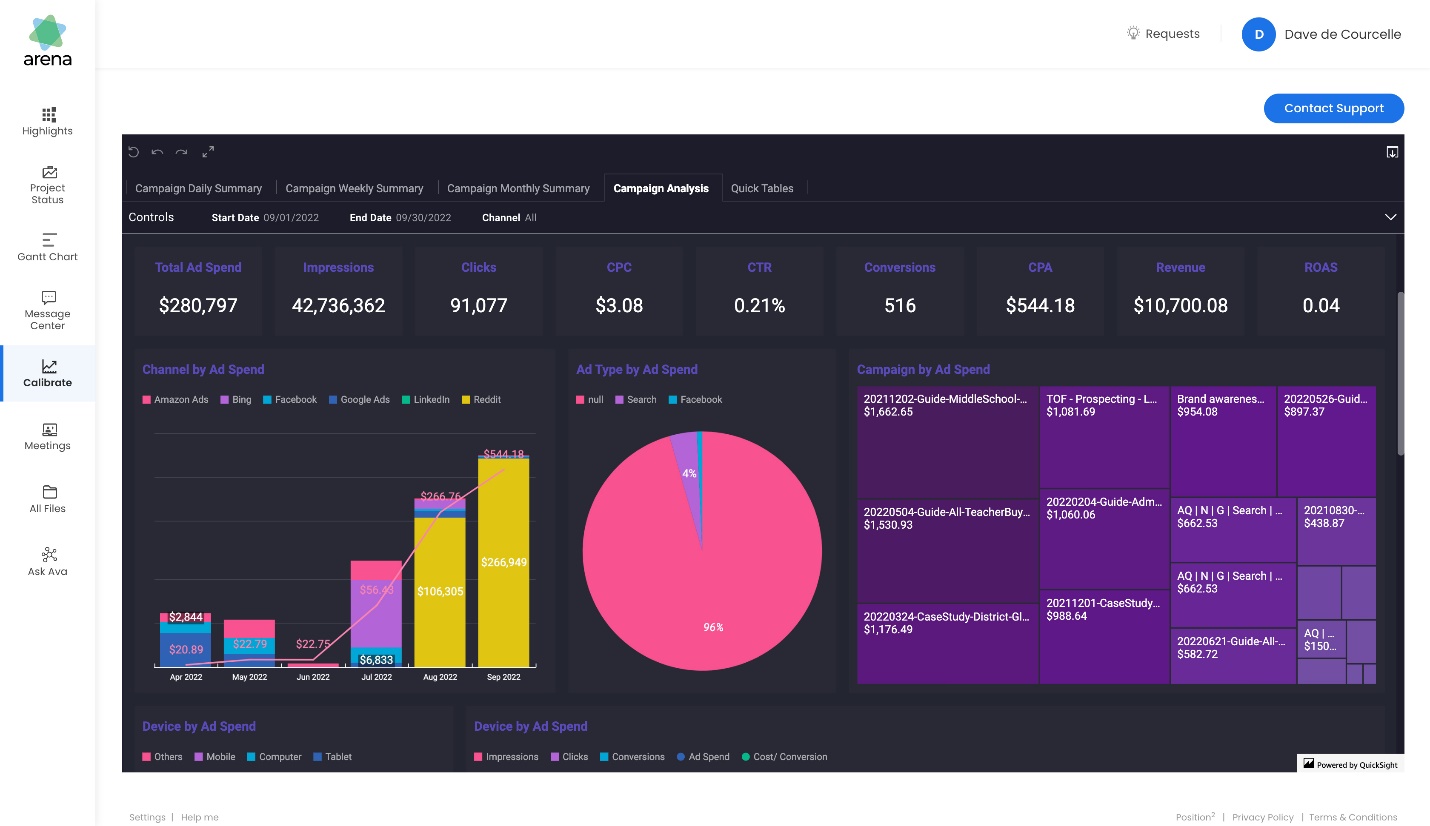


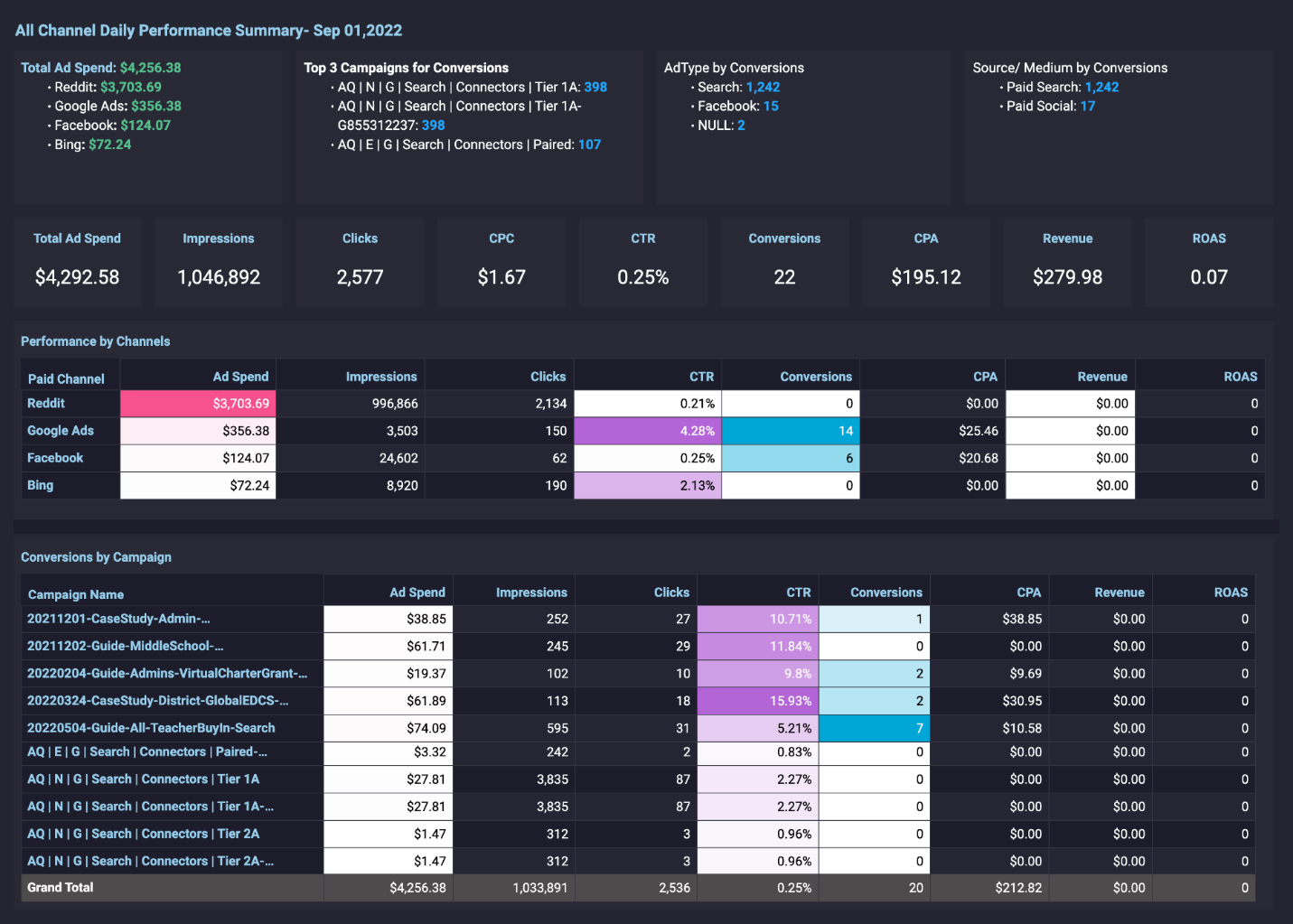
 Vinod Nambiar is the co-founder at Arena and Managing Director of Position2. An engineer with a passion for advertising, Vinod has been instrumental in designing all processes for delivery operations. His passion is to explore how the latest developments in technology can transform digital marketing. He is associated with various global forums in digital marketing and has been part of the faculty at leading marketing institutes in India like Northpoint and Mudra Institute of Communications. When not thinking digital, he can be found doing yoga and reading books ranging from spiritual to fiction. He lives with his wife and two children in Bangalore.
Vinod Nambiar is the co-founder at Arena and Managing Director of Position2. An engineer with a passion for advertising, Vinod has been instrumental in designing all processes for delivery operations. His passion is to explore how the latest developments in technology can transform digital marketing. He is associated with various global forums in digital marketing and has been part of the faculty at leading marketing institutes in India like Northpoint and Mudra Institute of Communications. When not thinking digital, he can be found doing yoga and reading books ranging from spiritual to fiction. He lives with his wife and two children in Bangalore.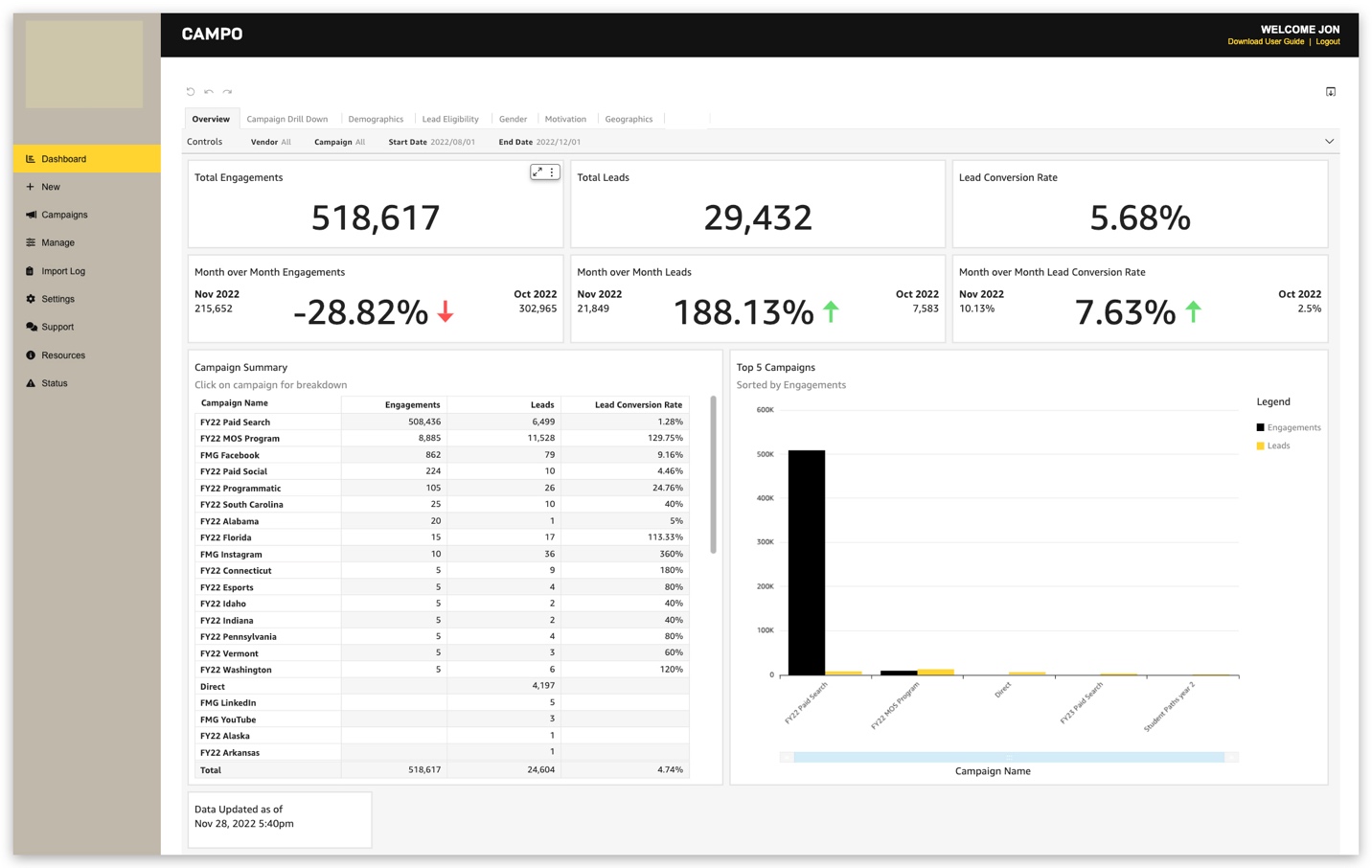

 Jon Walker, Senior Director of Engineering, is a native Nashvillian who has been in the technology field for over 19 years. He oversees enterprise-wide system engineering, development, and technology programs for large federal and DoD clients, as well as iostudio’s commercial clients.
Jon Walker, Senior Director of Engineering, is a native Nashvillian who has been in the technology field for over 19 years. He oversees enterprise-wide system engineering, development, and technology programs for large federal and DoD clients, as well as iostudio’s commercial clients. Ari Orlinsky, Director of Information Services, leads iostudio’s Information Systems Department, responsible for AWS Cloud, SaaS applications, on-premises technology, risk assessment, compliance, budgeting, and human resource management. With nearly 20 years’ experience in strategic IS and technology operations, Ari has developed a keen enthusiasm for emerging technologies, DOD security and compliance, large format interactive experiences, and customer service communication technologies. As iostudio’s Technical Product Owner across internal and client-facing applications including a cloud-based omni-channel contact center platform, he advocates for secure deployment of applicable technologies to the cloud while ensuring resilient on-premises data center solutions.
Ari Orlinsky, Director of Information Services, leads iostudio’s Information Systems Department, responsible for AWS Cloud, SaaS applications, on-premises technology, risk assessment, compliance, budgeting, and human resource management. With nearly 20 years’ experience in strategic IS and technology operations, Ari has developed a keen enthusiasm for emerging technologies, DOD security and compliance, large format interactive experiences, and customer service communication technologies. As iostudio’s Technical Product Owner across internal and client-facing applications including a cloud-based omni-channel contact center platform, he advocates for secure deployment of applicable technologies to the cloud while ensuring resilient on-premises data center solutions. Sumitha AP is a Sr. Solutions Architect at AWS. Sumitha works with SMB customers to help them design secure, scalable, reliable, and cost-effective solutions in the AWS Cloud. She has a focus on data and analytics and provides guidance on building analytics solutions on AWS.
Sumitha AP is a Sr. Solutions Architect at AWS. Sumitha works with SMB customers to help them design secure, scalable, reliable, and cost-effective solutions in the AWS Cloud. She has a focus on data and analytics and provides guidance on building analytics solutions on AWS.
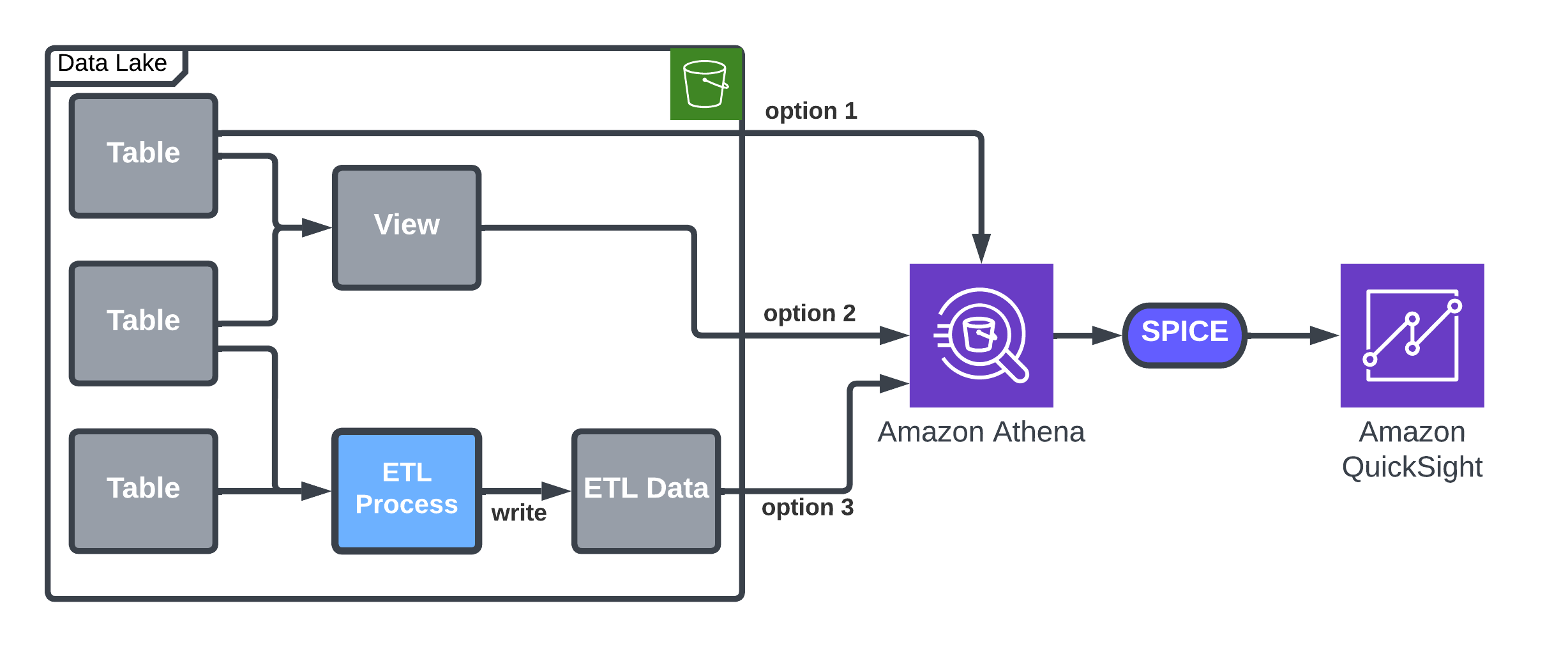



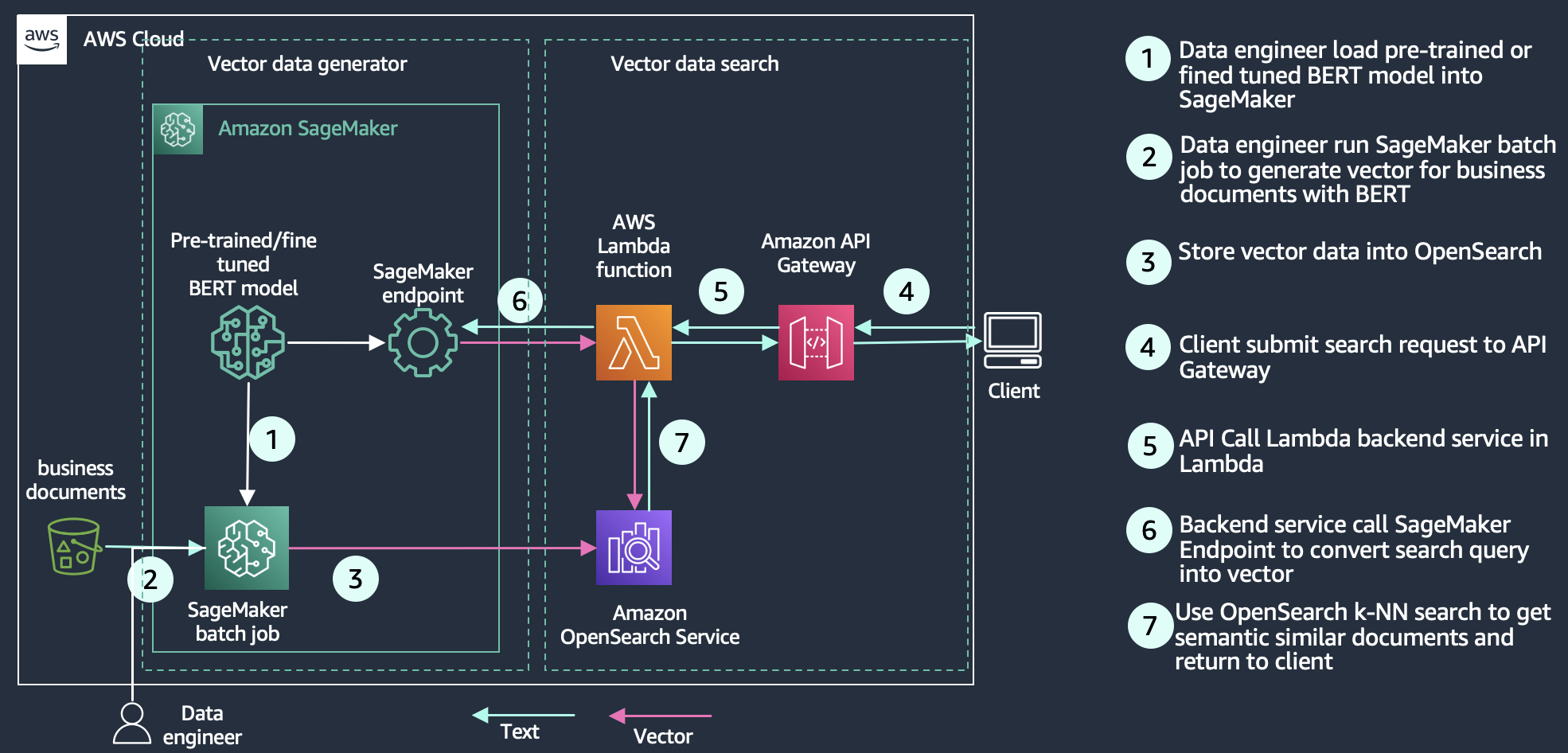
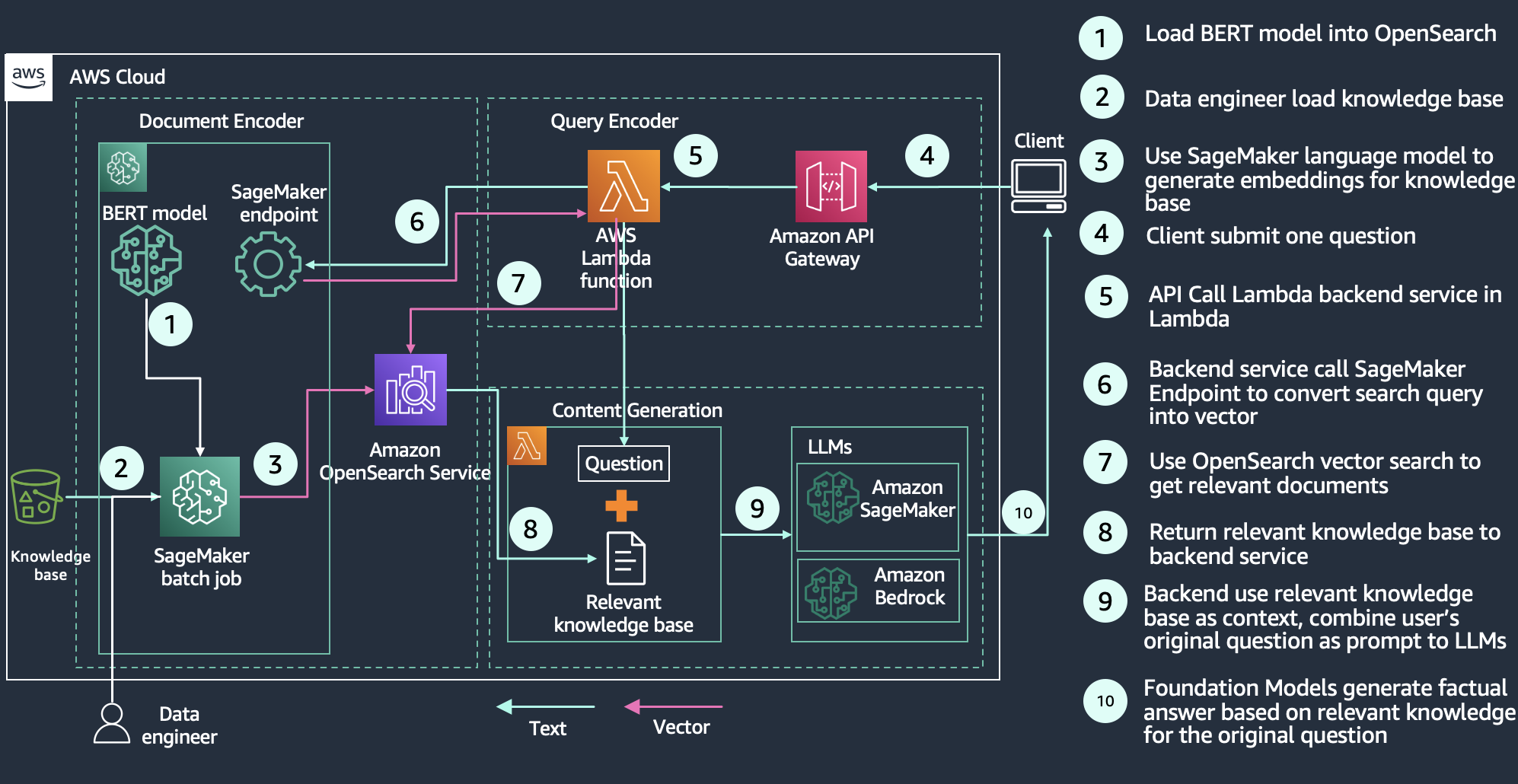
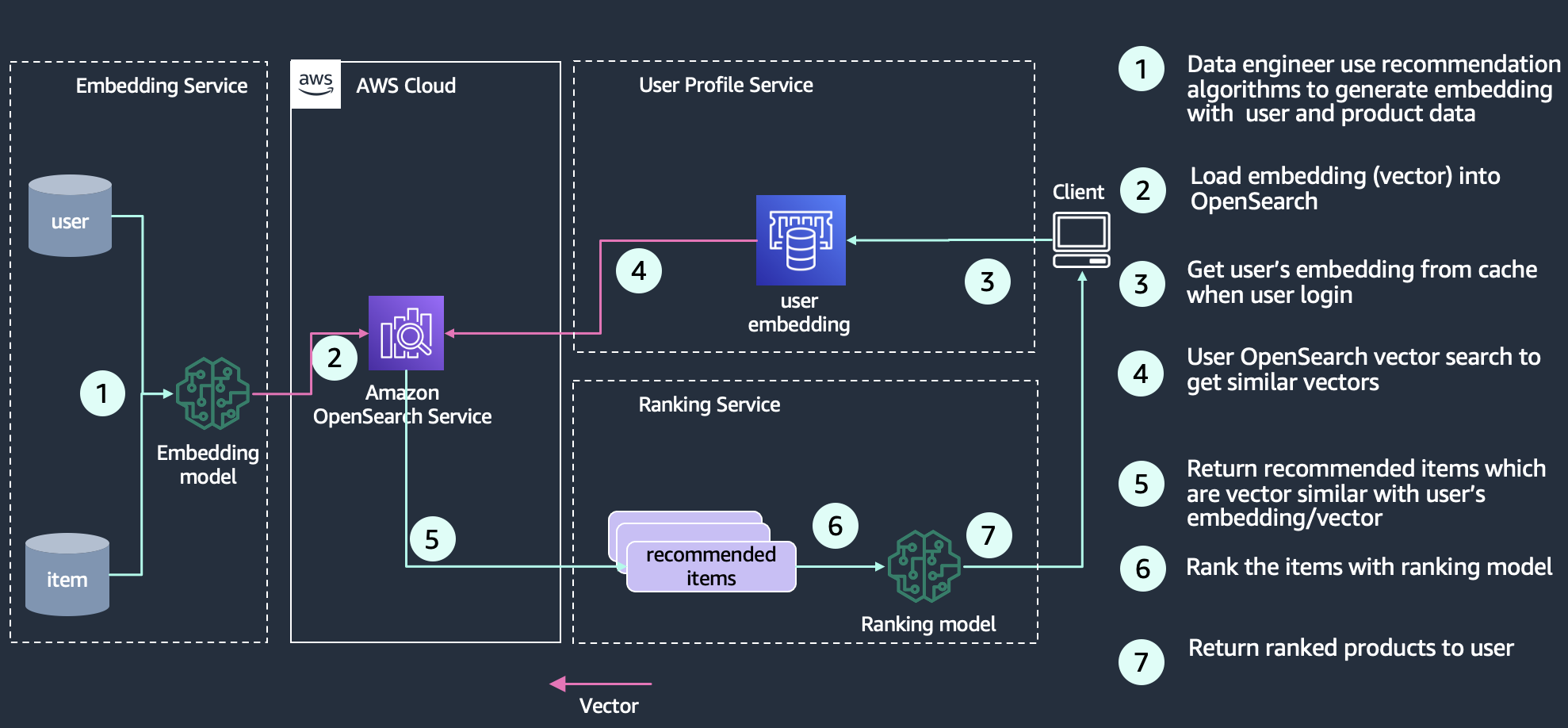
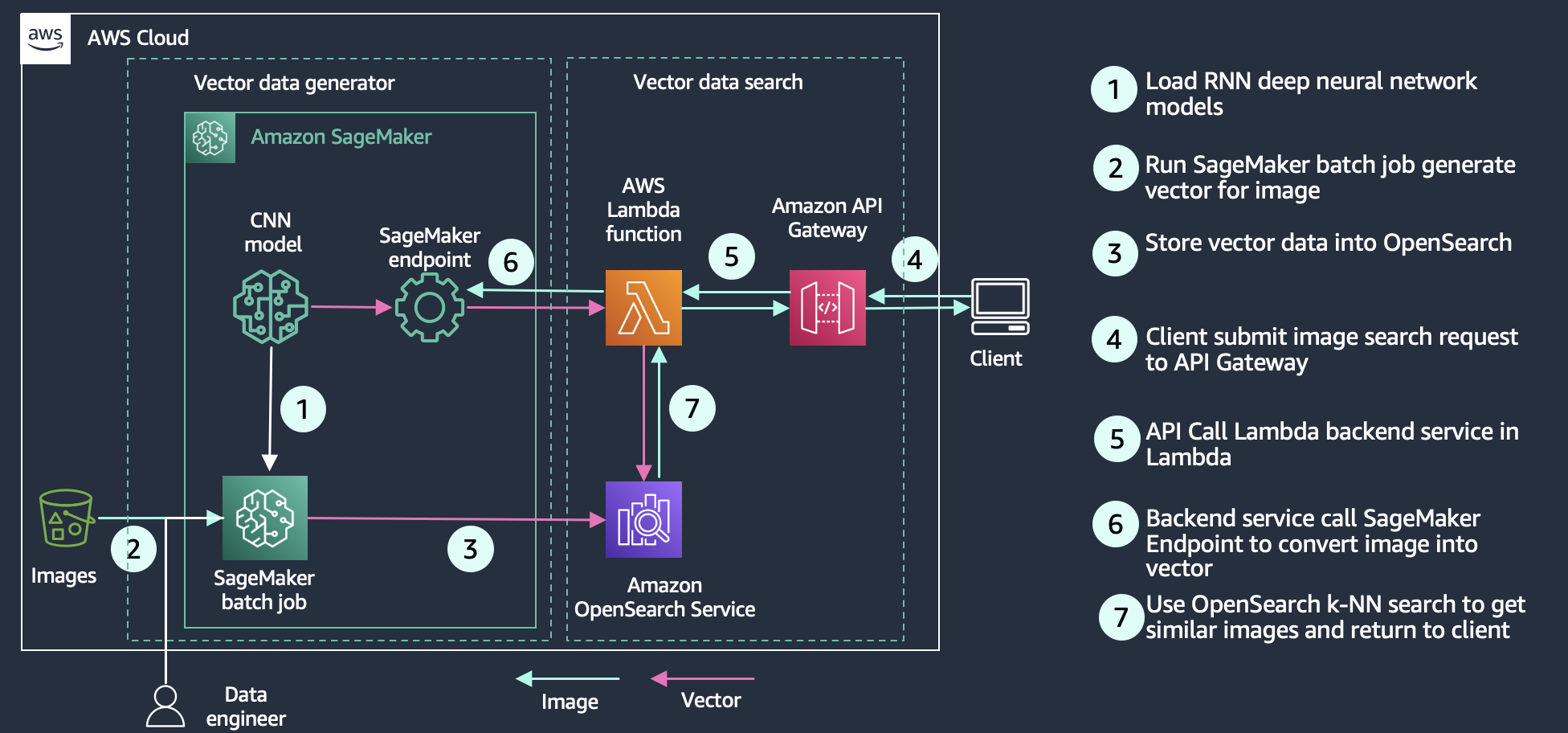

 Jon Handler is a Senior Principal Solutions Architect at Amazon Web Services based in Palo Alto, CA. Jon works closely with OpenSearch and Amazon OpenSearch Service, providing help and guidance to a broad range of customers who have search and log analytics workloads that they want to move to the AWS Cloud. Prior to joining AWS, Jon’s career as a software developer included four years of coding a large-scale, eCommerce search engine. Jon holds a Bachelor of the Arts from the University of Pennsylvania, and a Master of Science and a Ph. D. in Computer Science and Artificial Intelligence from Northwestern University.
Jon Handler is a Senior Principal Solutions Architect at Amazon Web Services based in Palo Alto, CA. Jon works closely with OpenSearch and Amazon OpenSearch Service, providing help and guidance to a broad range of customers who have search and log analytics workloads that they want to move to the AWS Cloud. Prior to joining AWS, Jon’s career as a software developer included four years of coding a large-scale, eCommerce search engine. Jon holds a Bachelor of the Arts from the University of Pennsylvania, and a Master of Science and a Ph. D. in Computer Science and Artificial Intelligence from Northwestern University. Jianwei Li is a Principal Analytics Specialist TAM at Amazon Web Services. Jianwei provides consultant service for customers to help customer design and build modern data platform. Jianwei has been working in big data domain as software developer, consultant and tech leader.
Jianwei Li is a Principal Analytics Specialist TAM at Amazon Web Services. Jianwei provides consultant service for customers to help customer design and build modern data platform. Jianwei has been working in big data domain as software developer, consultant and tech leader. Dylan Tong is a Senior Product Manager at AWS. He works with customers to help drive their success on the AWS platform through thought leadership and guidance on designing well architected solutions. He has spent most of his career building on his expertise in data management and analytics by working for leaders and innovators in the space.
Dylan Tong is a Senior Product Manager at AWS. He works with customers to help drive their success on the AWS platform through thought leadership and guidance on designing well architected solutions. He has spent most of his career building on his expertise in data management and analytics by working for leaders and innovators in the space. Vamshi Vijay Nakkirtha is a Software Engineering Manager working on the OpenSearch Project and Amazon OpenSearch Service. His primary interests include distributed systems. He is an active contributor to various plugins, like k-NN, GeoSpatial, and dashboard-maps.
Vamshi Vijay Nakkirtha is a Software Engineering Manager working on the OpenSearch Project and Amazon OpenSearch Service. His primary interests include distributed systems. He is an active contributor to various plugins, like k-NN, GeoSpatial, and dashboard-maps.














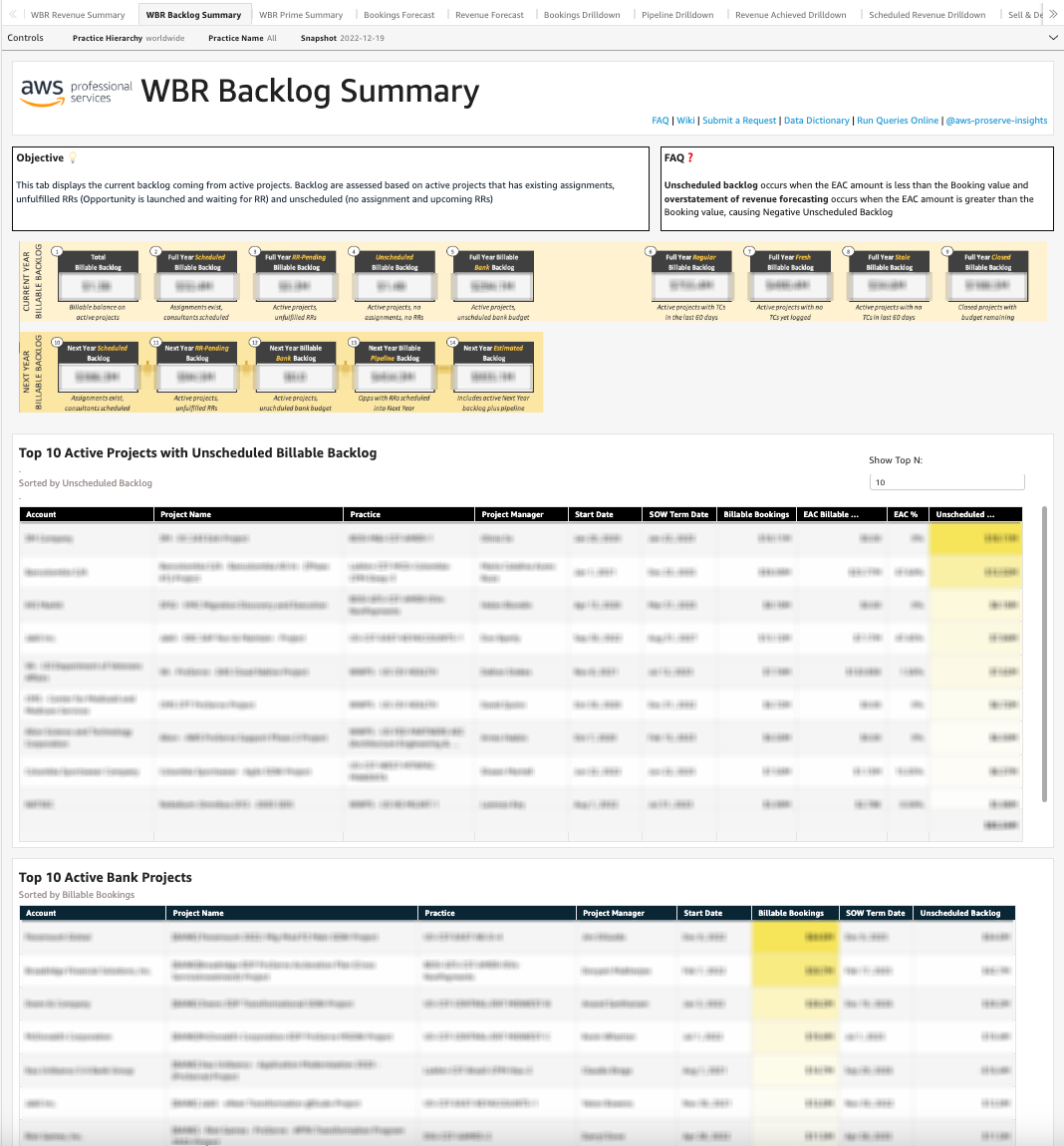
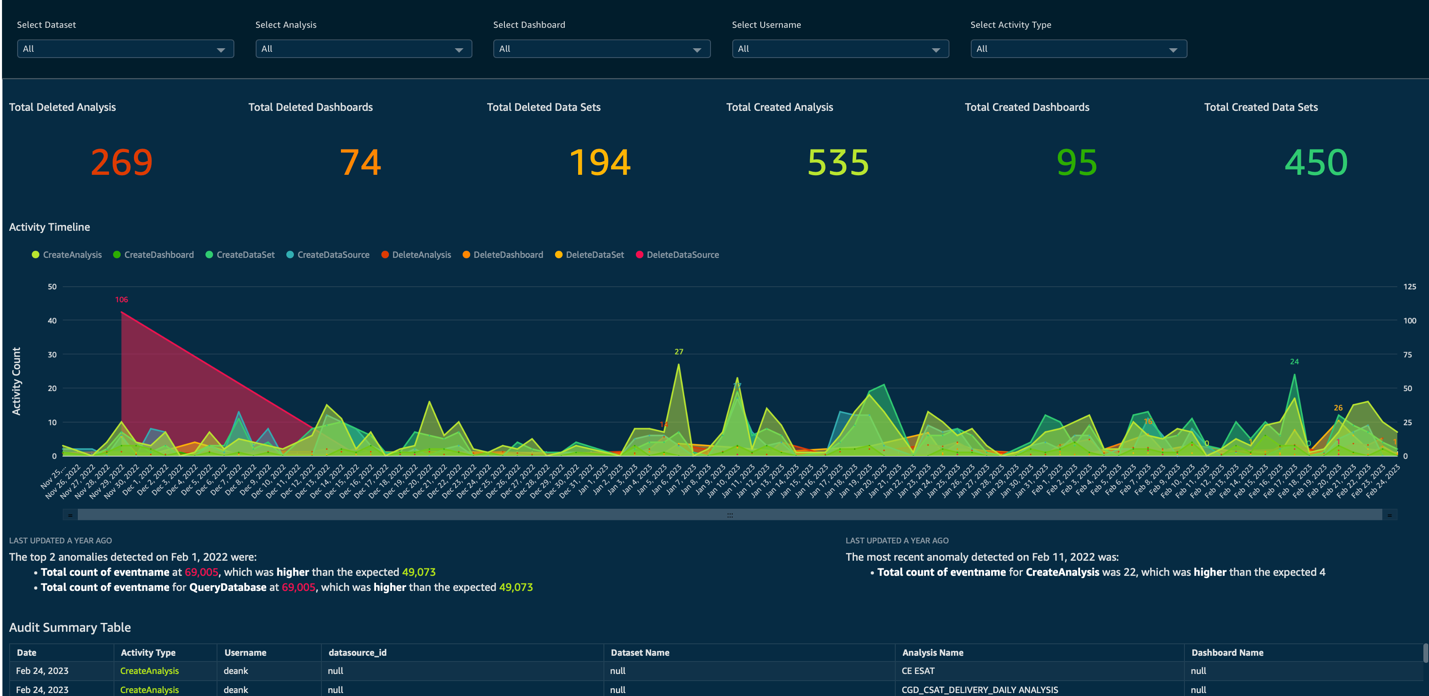

 Ameya Agavekar is a results-driven, highly skilled data strategist. Ameya leads the data engineering and data science function for AWS Professional Services World-Wide Business Insights & Analytics team. Outside of work, Ameya is a professional pilot. He enjoys serving community by applying his unique flying skills with the US Airforce auxiliary Civil Air Patrol.
Ameya Agavekar is a results-driven, highly skilled data strategist. Ameya leads the data engineering and data science function for AWS Professional Services World-Wide Business Insights & Analytics team. Outside of work, Ameya is a professional pilot. He enjoys serving community by applying his unique flying skills with the US Airforce auxiliary Civil Air Patrol. Tucker Shouse leads the AWS Professional Services World-Wide Business Insights & Analytics team. Prior to AWS, Tucker worked with financial services, retail, healthcare, and non-profit clients to develop digital and data products and strategies as a Manager at Alvarez & Marsal Corporate Performance Improvement. Outside of work, Tucker enjoys spending time with his wife and daughter enjoying the outdoors and music.
Tucker Shouse leads the AWS Professional Services World-Wide Business Insights & Analytics team. Prior to AWS, Tucker worked with financial services, retail, healthcare, and non-profit clients to develop digital and data products and strategies as a Manager at Alvarez & Marsal Corporate Performance Improvement. Outside of work, Tucker enjoys spending time with his wife and daughter enjoying the outdoors and music.

 Nir Tsruya is a Lead Engineer in Klarna. He leads 2 engineering teams focusing mainly on real time data processing and analytics at large scale.
Nir Tsruya is a Lead Engineer in Klarna. He leads 2 engineering teams focusing mainly on real time data processing and analytics at large scale. Ankit Gupta is a Senior Solutions Architect at Amazon Web Serves based in Stockholm, Sweden, where we helps customers across the Nordics succeed in Cloud. He’s particularly passionate about building strong Networking foundation in Cloud.
Ankit Gupta is a Senior Solutions Architect at Amazon Web Serves based in Stockholm, Sweden, where we helps customers across the Nordics succeed in Cloud. He’s particularly passionate about building strong Networking foundation in Cloud. Daniel Arenhage is a Solutions Architect at Amazon Web Services based in Gothenburg, Sweden.
Daniel Arenhage is a Solutions Architect at Amazon Web Services based in Gothenburg, Sweden.